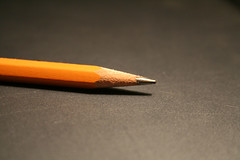The Movie Prop-Hunters’ Museum
by Charles Abbott Goddard
The prop man must scratch the word “can’t” from his vocabulary. The property man of the studio, the man who gets various articles that appear to make the setting realistic, has to know what to get for the studio to develop settings which the audience sees completed.
In order to achieve this vital aim, the chief of the department and his men are ever on the alert. They don’t wait until something is requested before they start looking for it. They always strive to be a little ahead of the game. They get a line upon everything which they think will ever be used as a prop and enter it in their index. They never miss an opportunity. If they see a strange vehicle, an unusual antique or anything else which isn’t on their lists, they get all possible information concerning such an article, where it may be found at a moment’s notice, and put that information down in black and white in the department files. Only a few weeks ago the chief of props in one studio, while driving in the business section of Los Angeles, saw a Ford taxicab of the 1913 model. He noted immediately that it possessed a very unusual feature — that despite its age, it looked almost new, having received excellent care and perhaps little usage. The value of such a condition lay in the fact that pictures are often produced wherein the action supposedly takes place some years ago, but in which new or almost new properties are required. The property must be physically new, yet it must be suited to the period of time in which the action takes place. He chased the taxicab for twelve blocks and finally caught it. He obtained the address where it might be obtained and a description of the car, which he entered in his index. Not more than two weeks later a director asked for just such a car for a comedian to drive. Without difficulty the machine was secured and rented.
In the studio department there are two property indexes. One is a list of the properties on hand in the prop room and names, describes, and numbers something like sixty-five thousand items. The other is a list of obtainable props, much larger than the first list, and contains all necessary information about properties not on hand but which may be secured on short notice. This list includes a ridiculous variety of entries, ranging from trained monkeys, snakes, and canary birds to false teeth.
from Illustrated World, March 1922, Vol. 37, No.1 (pp. 849-851, 939)


